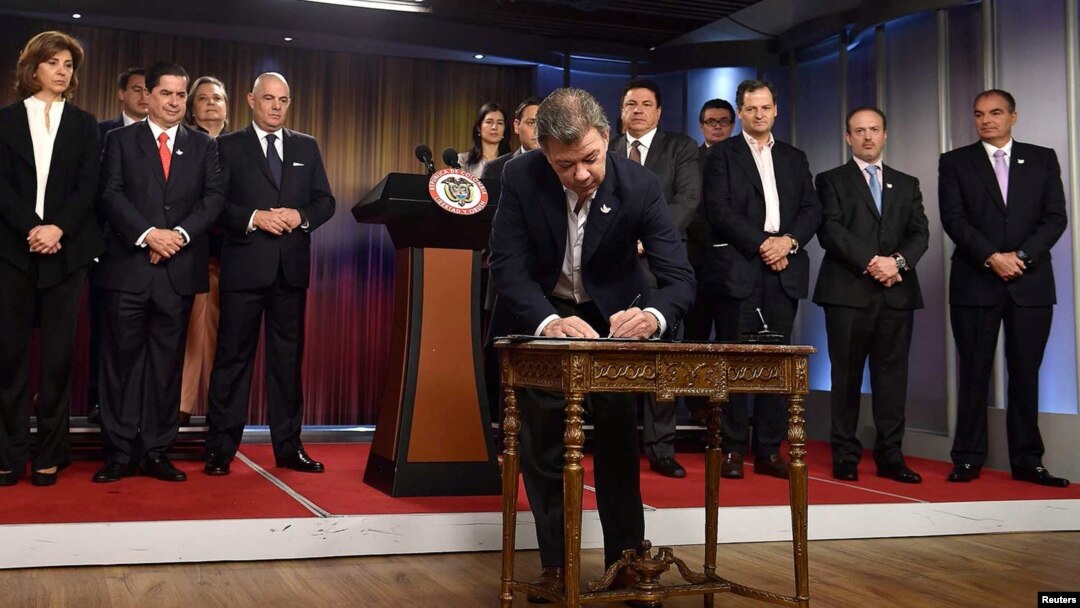Colombian President Juan Manuel Santos on Tuesday officially called a plebiscite allowing the nation to decide whether to accept a peace agreement to end more than five decades of war with Marxist rebels.
Voters will be asked on October 2 to respond yes or no to a single question: "Do you support the accord that puts an end to armed conflict and constructs a stable and durable nation?"
Santos's four-year push to negotiate an end to 52 years of war with the Revolutionary Armed Forces of Colombia (FARC) was concluded last week, and he had promised to give Colombians the final decision.
"It's a clear and simple question that leaves no room for any confusion," Santos said after signing the document.
But opposition legislators have said the question is one-sided toward a yes vote.
In a historic agreement last week, the government and the FARC leadership, who represent a 7,000-strong insurgent group, agreed to end the war that has killed more than 220,000 people and displaced millions.
The 297-page accord has been published so that Colombians can pore over its contents before the vote. A final signature is expected before then.
Campaign faces opposition
Santos, who has staked his legacy on peace, has launched a campaign to persuade Colombians to back the accord, but he faces fierce opposition from powerful sectors of the country who believe the only solution is to finish the FARC militarily.
Two former Colombian presidents, including popular right-wing hard-liner Alvaro Uribe, oppose the deal.
Most opinion polls suggest Colombians will back the deal, but the nation is deeply divided about what sort of justice the rebels should face and how they should be incorporated into society.
Under the deal, the FARC will be given nonvoting congressional representation until 2018. From then until 2026, they will be given 10 voting seats whether they have electoral support or not.
The FARC began as a ragtag group of rebels protesting rural injustice, but by the end of the 1990s had become so powerful — with as many as 17,000 fighters — that they occupied towns surrounding the capital, Bogota, and were on the verge of entering the city.



